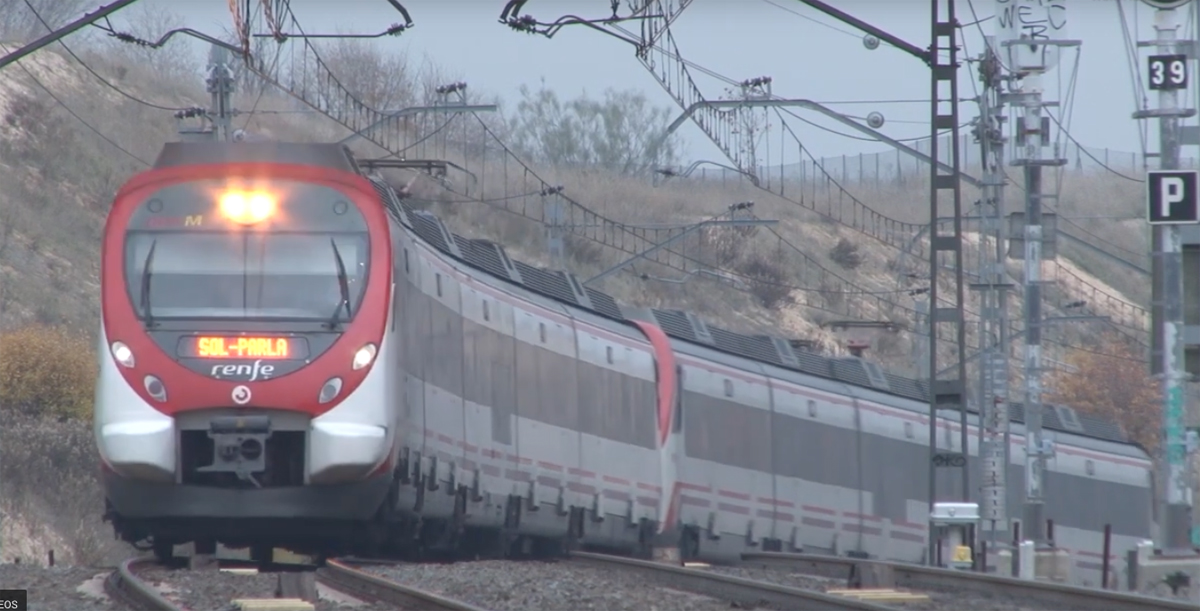In its shift to Precision Scheduled Railroading during the past two years, CSX scrapped its hub-and-spoke intermodal network model and dropped service to hundreds of low-volume lanes both on and off its system. The goals: Cut costs, boost profitability, and make service more reliable and consistent so that it can grow.
“Prior to implementing scheduled railroading … we had periods of time where we delivered good service. We had challenges maintaining consistent, reliable service. And quite frankly we had a very complicated network, especially on the intermodal side,” Kenney says. “We were trying to be all things to all people, serve every lane that somebody wanted us to serve, and we really didn’t think about the volume and density that was required to really make you successful in railroading.”
CSX jettisoned its hub-and-spoke system, which required costly container handling and switching en route, in late 2017. It’s now operating a simpler — and smaller — point-to-point system that concentrates on high-density intermodal lanes.
The streamlined network, combined with operational improvements across the railroad, has boosted reliability, Kenney says.
CSX used to measure intermodal on-time performance to within four hours of scheduled arrival. The high-water mark was on-time performance of around 90%.
Now on-time performance is measured to the minute based on the trip plans for each container and trailer. To-date in the third quarter, intermodal trip-plan compliance stands at 93%, a 20-point improvement since the second quarter of last year.
Intermodal trip-plan compliance hit 98% and 99% on some days last week, Kenney says.
CSX’s intermodal service benefits from the simpler network, as well as overall improvements in the railroad’s operations, including higher average train speed and a less-congested network due to moving tonnage on fewer but longer trains.
“We’re looking to grow,” Kenney says. “We’re open for business and we’re excited by the consistent, reliable service we’re able to bring customers.”
The pruning of the CSX intermodal network jettisoned about 15% of the railroad’s intermodal volume over the past two years. CSX intermodal volume is down 8% to date this year, double the 4% overall decline in North American intermodal volume.
Will CSX and Union Pacific relaunch some of the interline service that was discontinued last year now that intermodal demand is down?
The Journal of Commerce reported earlier this month that intermodal marketing companies had received inquiries from the railroads to determine if there was interest in a resumption of service in some of the dropped lanes.
“I can’t say today that there’s been anything that’s been decided,” Kenney says, adding that CSX constantly evaluates its network and its interline service as markets evolve.
Kenney says CSX has seen growth in several areas.
These include its Northwest Ohio intermodal terminal, which now serves local markets instead of being used as a sorting hub.
“We’ve seen great growth over the past couple of years. We think there’s opportunity for more,” Kenney says.
BNSF Railway serves the terminal directly via a haulage agreement with CSX from Chicago. Currently, the service includes origins in California but likely will be expanded to more locations, says Tom Williams, BNSF’s group vice president of consumer products.
CSX recently completed terminal expansion projects at its Fairburn terminal in Atlanta, and late next year will open its Carolina Connector terminal in Rocky Mount, N.C., which will serve the Raleigh market.
Next month, CSX will launch new joint intermodal service with Canadian National to connect Toronto and Montreal with New York, New Jersey, and Philadelphia. CN is handling the marketing and sales for the new service.
International service from Southeastern ports to inland ports also has seen robust growth, Kenney says, as container volume shifts to the East Coast.
Overall, that trend is negative for railroads, however, as intermodal captures far less international volume from East Coast ports than it does from West Coast ports.
Kenney spoke to an audience at the Intermodal Association of North America’s annual Intermodal Expo.














Don’t jump to conclusions that CSX is just serving Wall St. and Wall St. only. The model at CN w/Hunter and PSR was to make painful changes to streamline the network, fix the physical plant where dollar-investment made the most sense, and then go back and capture new (or recapture) business in a very methodical fashion — business that wouldn’t upset the PSR model. The jury is very much still out on this. I know it will never happen, but Wall Street needs to look at railroads as a completely different animal and type of profit center vs. other industries. I know it won’t, but we can all hope …
@Alex Christmas: I think that is the prevailing argument when it comes to PSR. What constitutes a difficult customer and one that can’t be integrated into the new service plan.
If you shuffle off business even when it is profitable, but is too difficult to manage within the whole, most firms either spin off or create subsidiaries to measure them.
But in the case of the Class1’s, it seems to be that they just want to dump them regardless.The metric they use to measure future profitability is solely tied to a single activity or movement. (for example Hasa) or to the carriers inability to manage the logistic requirements (City of Rochelle).
I get the business benefit of simplification and reverting to a key, core service. But I think they leave a lot of scraps behind on the table to get the shareholders well fed.
@John Rice, why should the troublesome 10% of the customer base get to stifle the system for the rest of them?
Drop the stuff which isn’t worthwhile and causes problems, and focus on the core network. Pretty simple, really.
When you eliminate your most difficult to serve customers, I am sure the numbers look absolutely fantastic.
Wait until UP declares the same thing. Should be soon now.